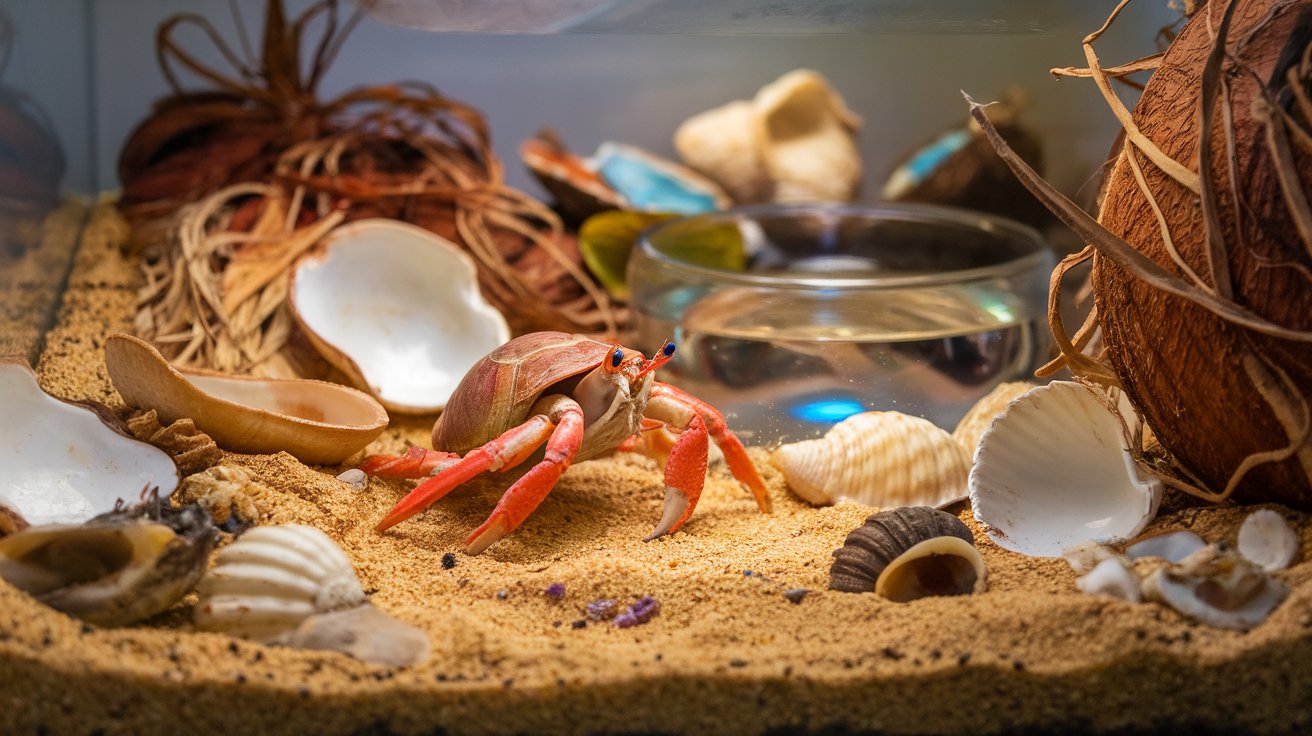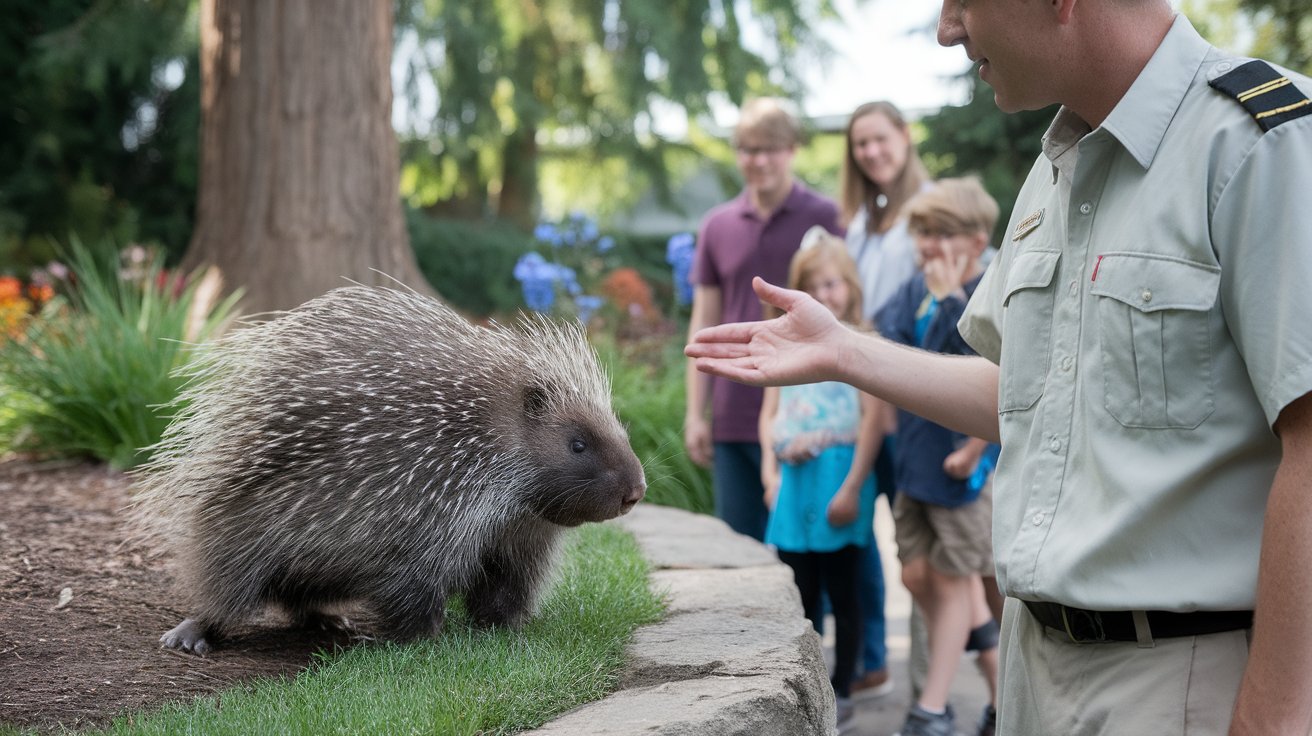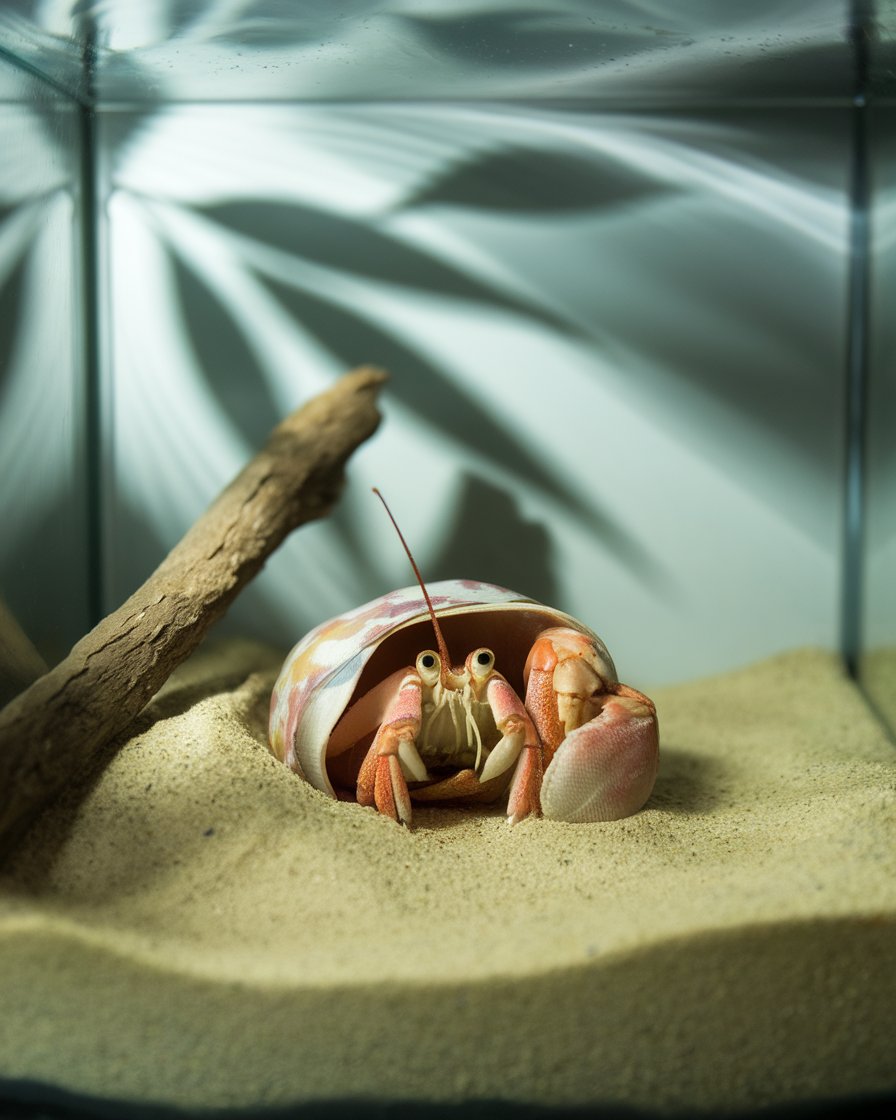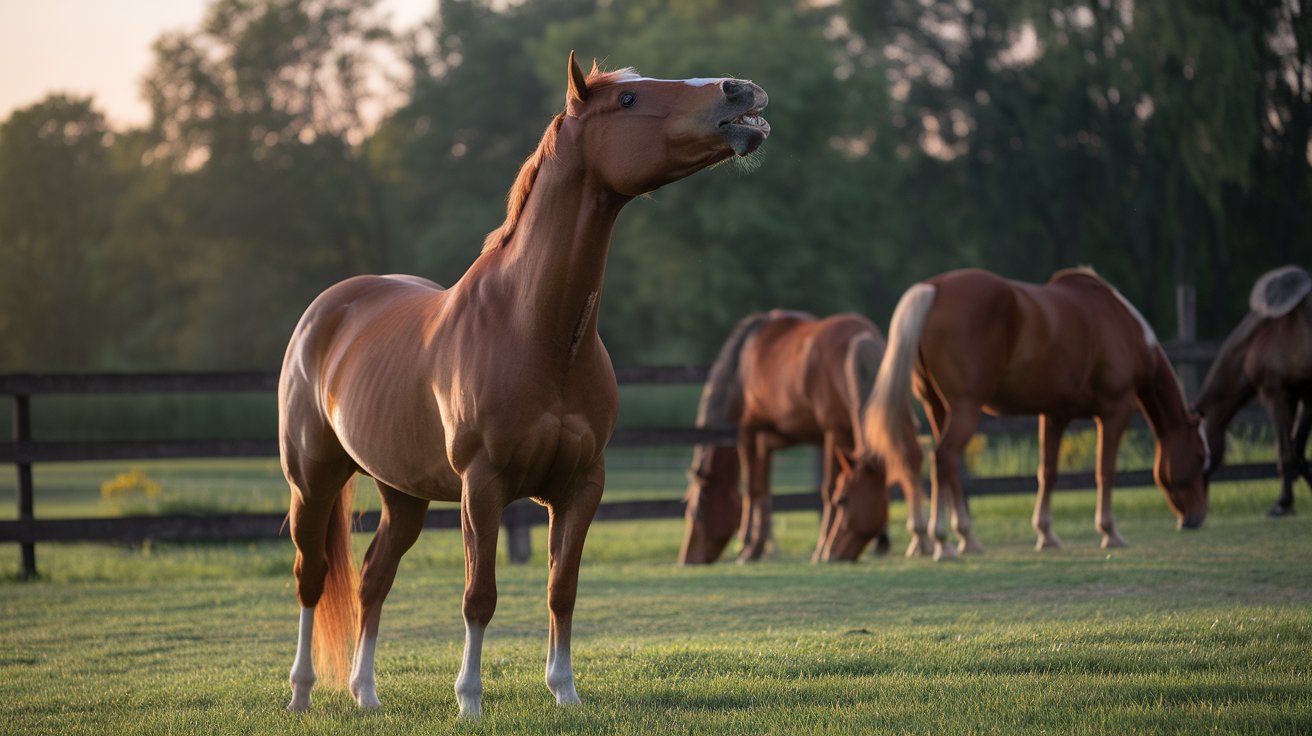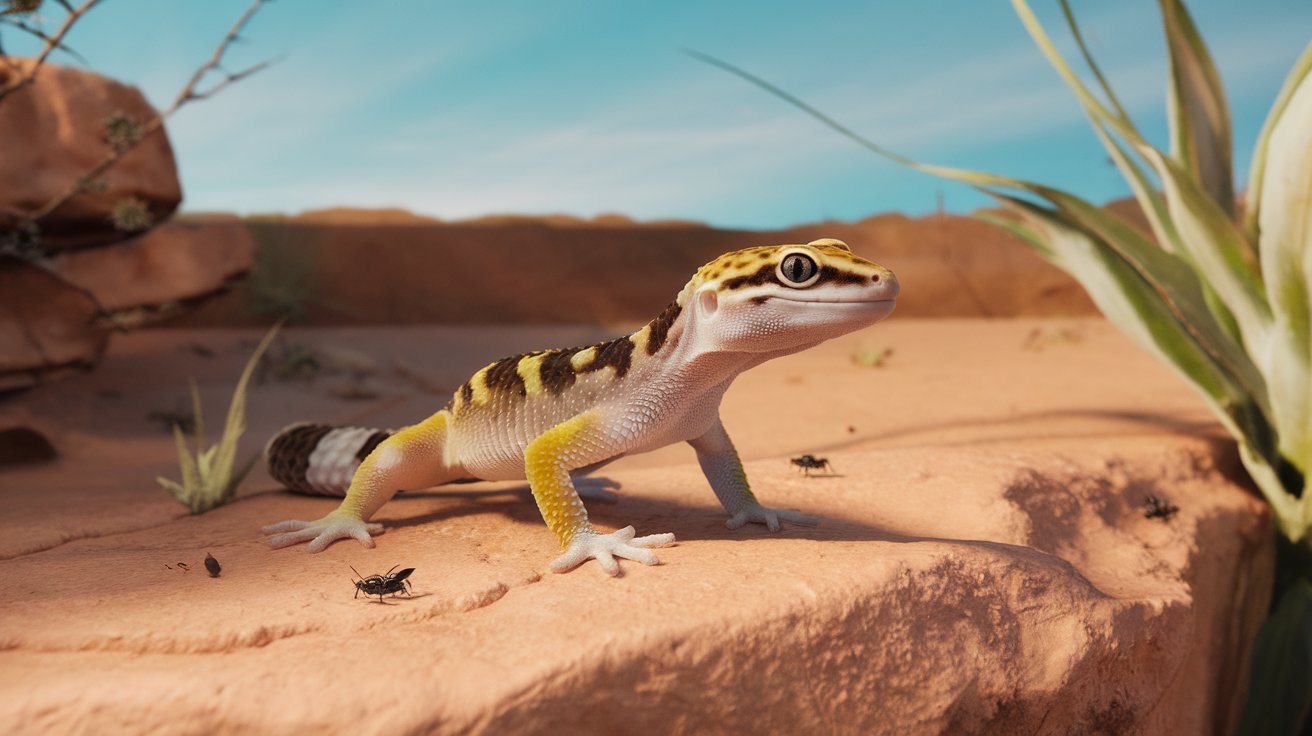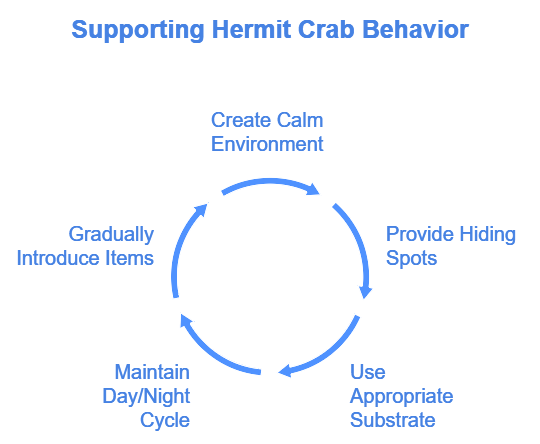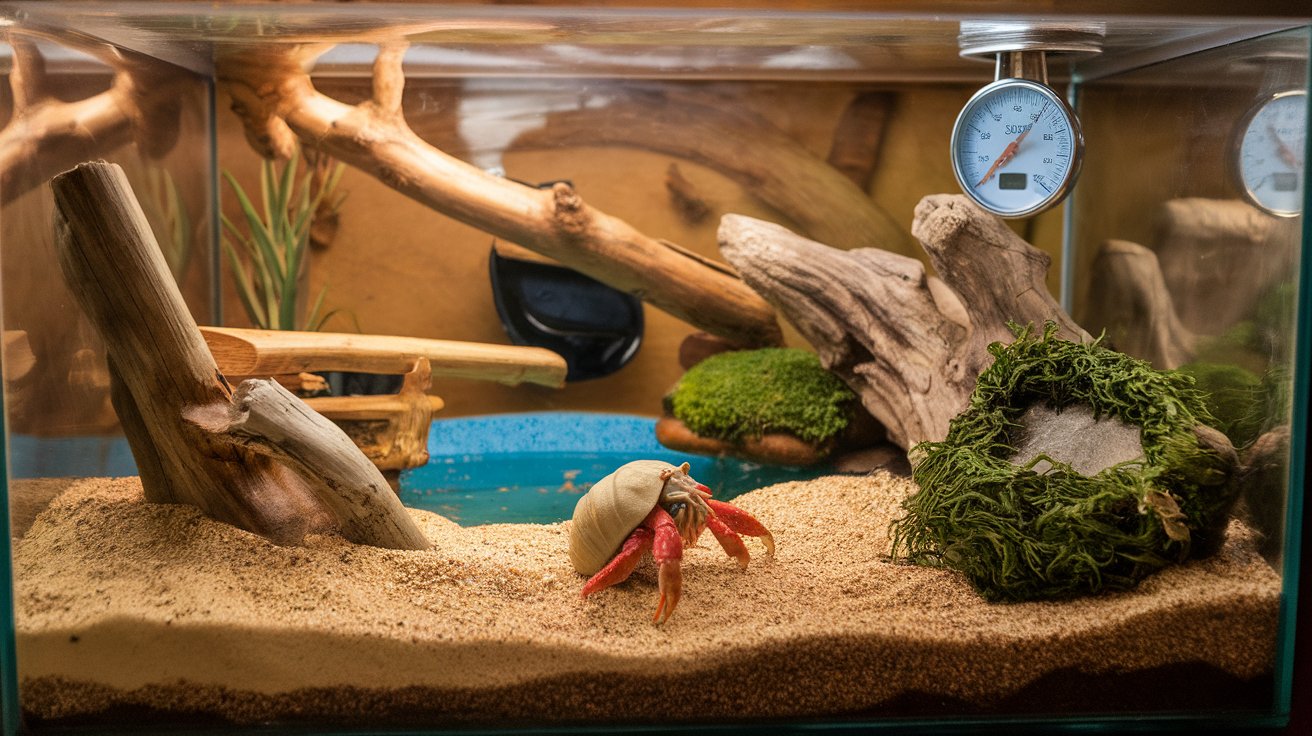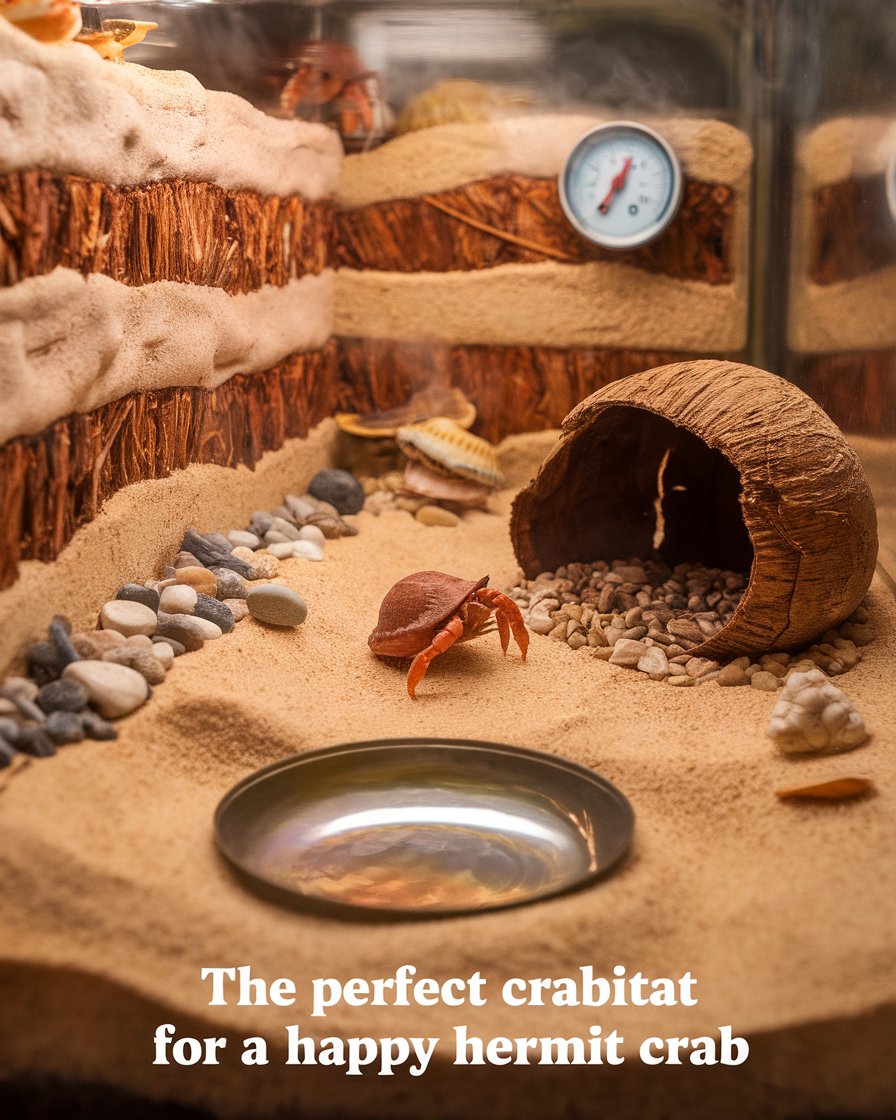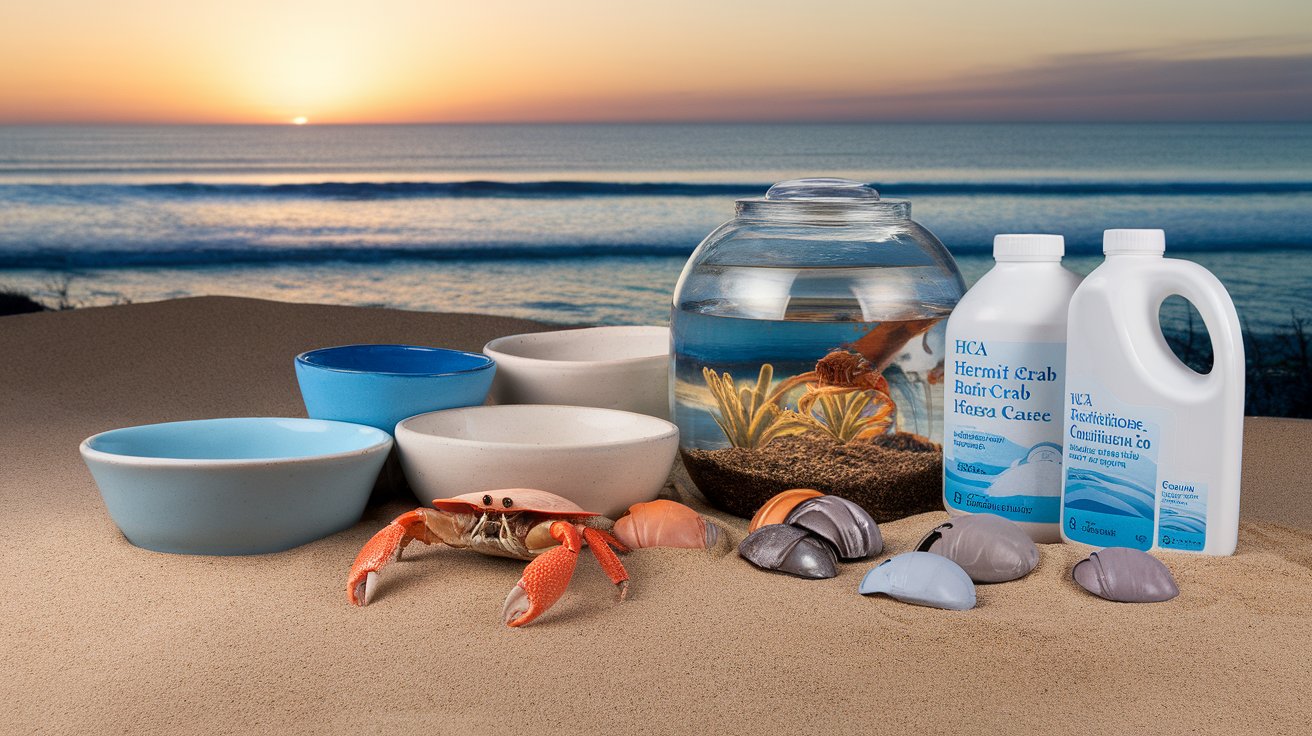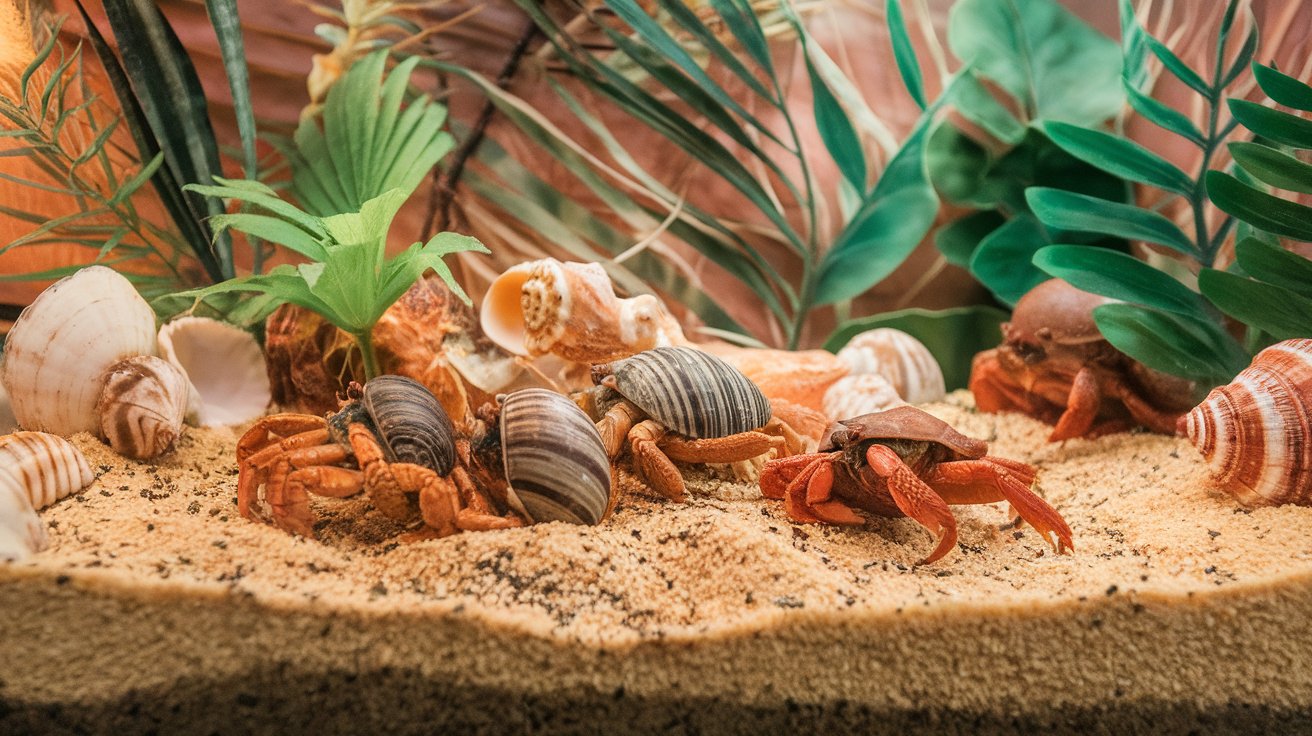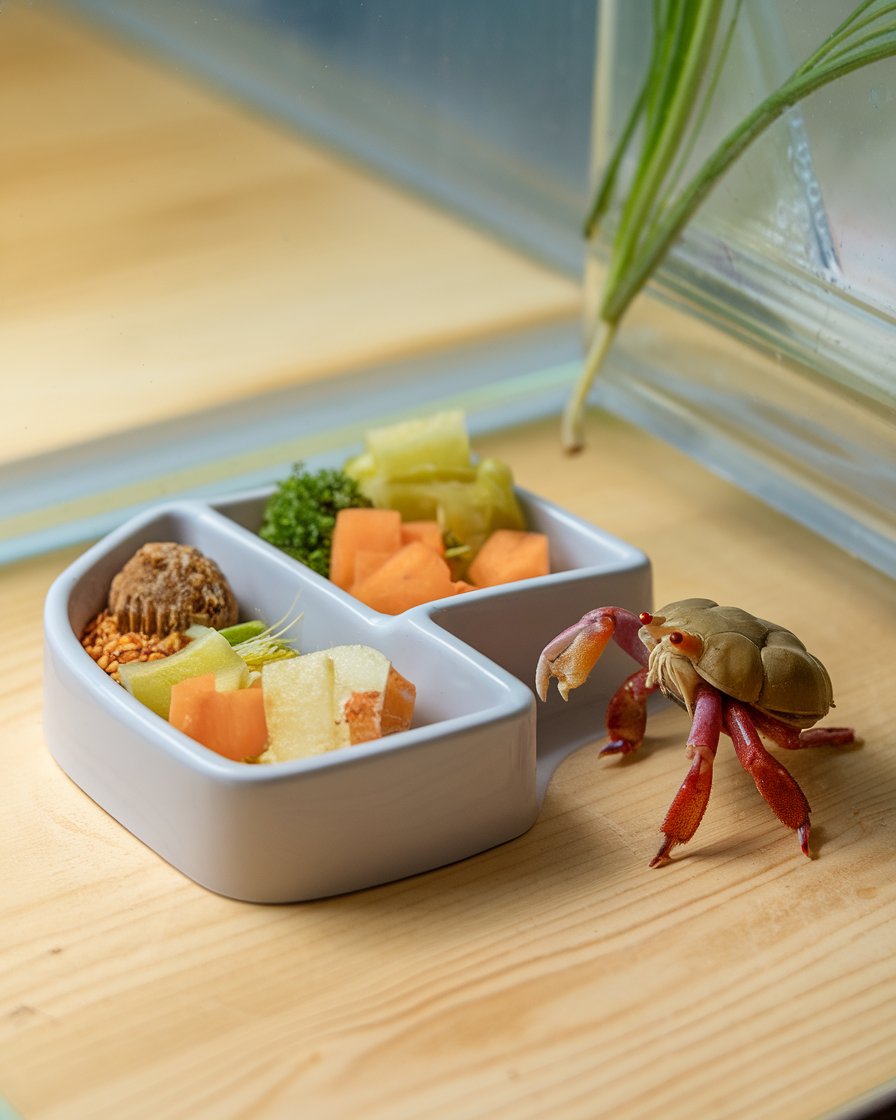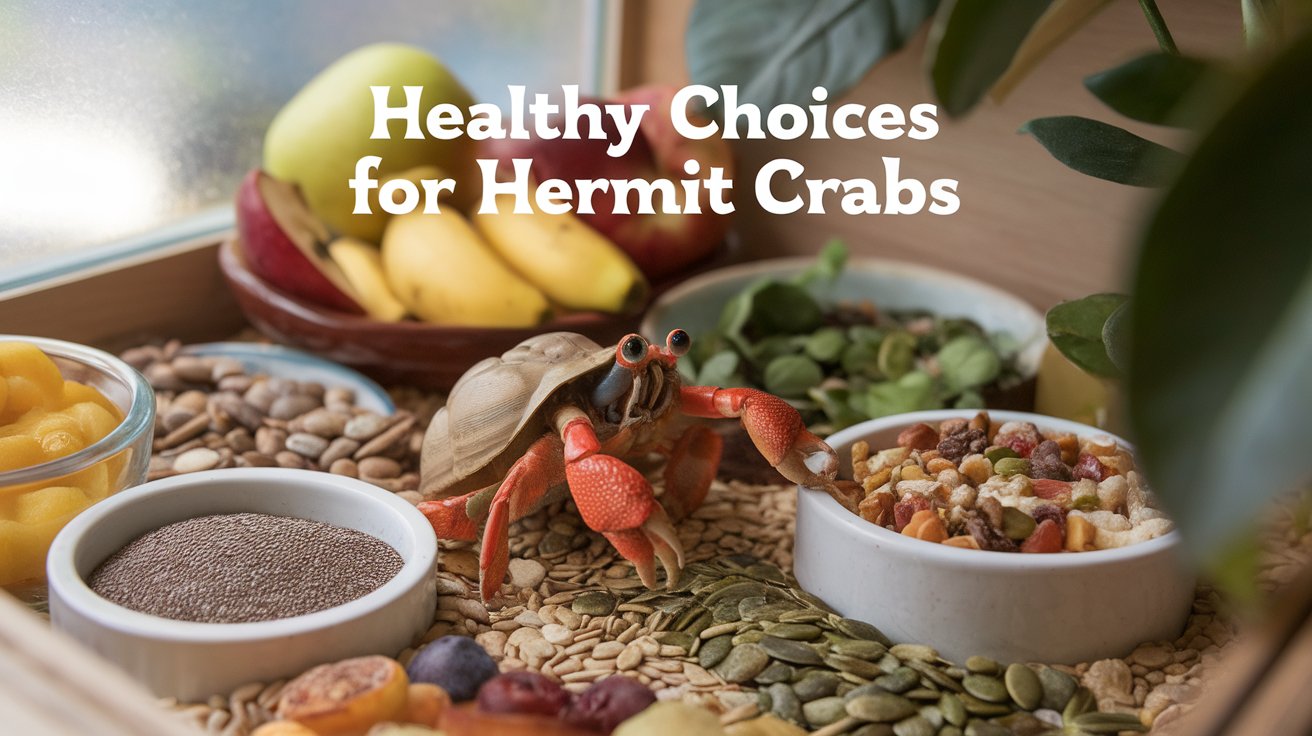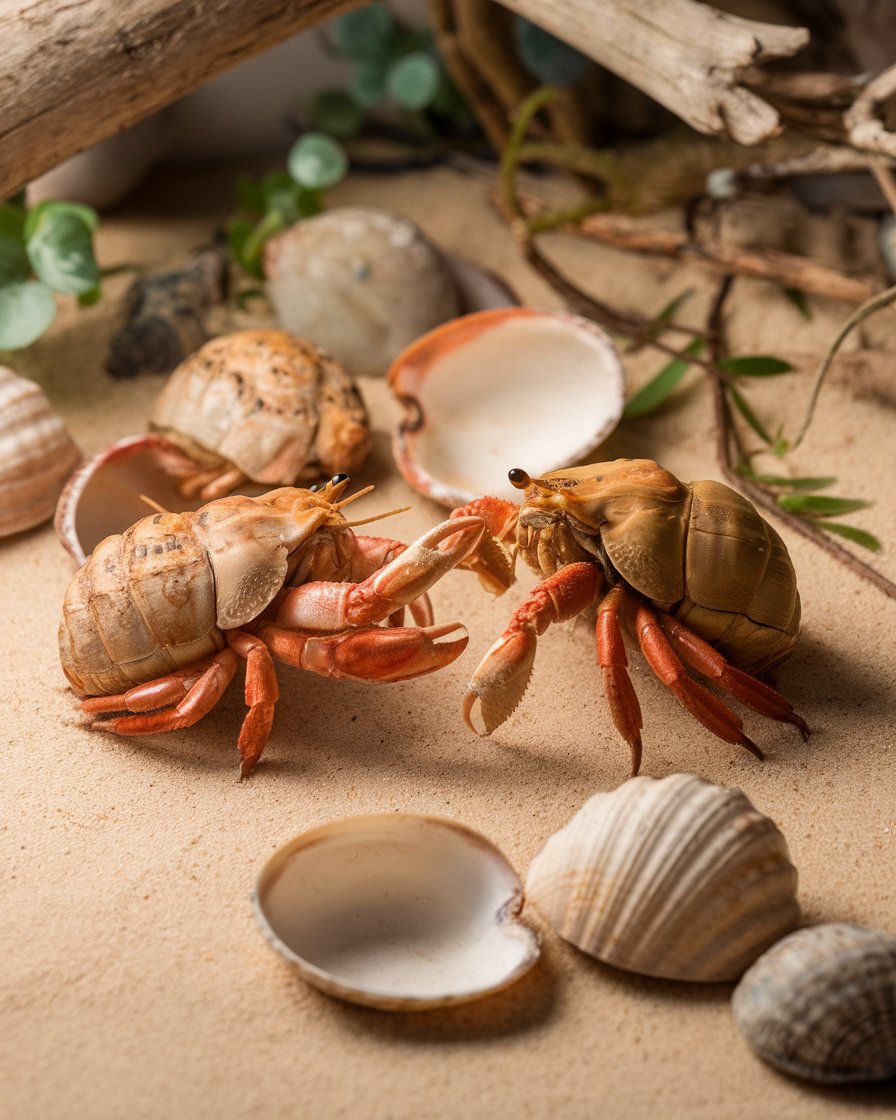Introduction
Hermit crabs have a way of sparking curiosity with their odd yet charming behavior. From their careful shell-swapping to shy hiding and surprising social “pecking orders,” they bring a lot of personality to their small world. But caring for hermit crabs goes beyond simple feeding. They need a “crabitat” that makes them feel safe—a place with cozy hiding spots, climbing areas, and the right humidity to keep them breathing easy and stress-free. By setting up this safe, snug environment, owners can support their natural habits and help them explore their surroundings with confidence.
Food also plays a big part in keeping these small creatures healthy. A mix of fresh vegetables, fruits, and special calcium-rich treats like cuttlebone gives them the boost they need to grow and even molt. Paying attention to their social “pecking order” and bonding behaviors adds a layer to their care, making each interaction fascinating. With a bit of time and the right setup, keeping hermit crabs becomes a unique and enjoyable experience.
Key Takeaways
- A well-designed “crabitat” with hiding spots and climbing areas helps hermit crabs feel safe and comfortable.
- Maintaining proper humidity and temperature supports their breathing and molting processes.
- A balanced diet, including fruits, vegetables, and calcium-rich foods, is essential for hermit crab health.
- Providing various natural shells reduces shell fights and supports peaceful interactions.
- Understanding hermit crabs’ social “pecking order” helps in managing their group dynamics.
- Observing their unique behaviors, like hiding and shell-swapping, creates a deeper bond with these curious creatures.
Understanding Hermit Crab Behavior in Captivity
Hermit crabs, particularly the land hermit crab, exhibit unique behaviors that differ slightly when kept as pets. Often shy, they may retreat into their empty shell or hide for extended periods, especially after molting. Recognizing these natural behaviors is key to ensuring comfort for each land hermit. Factors like safe hiding spots, climbing structures, and environmental cues like humidity play an essential role. For new owners, understanding that this behavior stems from their instinctive need to avoid predators can reduce stress and encourage more active exploration. One crab may even seek another crab for social interaction. Gradual changes to their environment and respect for their shy nature create a safe atmosphere for these cautious creatures, allowing them to crawl freely, chirp, and use their claw as they grow accustomed to the habitat.
Identifying Shy Behavior in Hermit Crabs
Hermit crabs often display shy behavior by retreating into their shells or burrowing to avoid perceived threats. This behavior is more common in new environments or when owners frequently interact with them. Shy crabs may limit their activity to nighttime, avoiding contact during the day when more disturbances occur. Observing their patterns helps owners respect their boundaries, allowing them to explore and engage more freely. Providing consistent hiding spots and quiet spaces reduces stress, making them feel more at ease over time. Understanding and accommodating their shy tendencies builds a safer, more peaceful habitat for these gentle creatures.
Environmental Factors Influencing Behavior
The environment plays a significant role in shaping a hermit crab’s behavior. Factors like substrate depth, availability of hiding places, and the amount of natural or artificial shade influence how comfortable they feel. A habitat with plenty of safe, shaded spaces and an appropriate substrate encourages hermit crabs to explore without fear. It’s also helpful to maintain stable humidity levels, as fluctuating conditions can make them anxious or encourage hiding. Ensuring they feel secure in their surroundings fosters healthier, more natural behaviors, leading to a more active and engaging environment for both hermit crabs and their owners.
Ways to Support Hermit Crab Behavior in Captivity
1. Design a Calm, Low-Stress Environment
Hermit crabs are sensitive to loud noises and sudden movements, so keep their habitat in a quiet spot, away from high-traffic areas in your home. This helps them feel secure and encourages more natural behavior, like exploring and socializing.
2. Offer a Variety of Hiding Spots
Setting up different hiding spots using coconut shells, rocks, or driftwood lets hermit crabs retreat when they need privacy or feel threatened. These cozy spaces can help ease their shyness and boost their confidence over time.
3. Use Depth-Appropriate Substrate
Hermit crabs need enough depth to burrow comfortably, especially during molting. Providing at least three inches of sand or a mix of sand and coconut fiber encourages their natural digging instinct and helps them feel at home.
4. Maintain a Consistent Day/Night Cycle
Hermit crabs are nocturnal, so creating a dark environment at night mimics their natural rhythms. Covering the tank or using low lighting can help trigger their nighttime activity, promoting stress-free behavior.
5. Gradually Introduce New Items
When adding new elements to their habitat, introduce items slowly. Sudden changes can stress hermit crabs, but gradual adjustments give them time to adapt, keeping their environment both stimulating and secure.
Creating a Safe and Supportive Crabitat
A well-structured crabitat that mirrors their natural environment is vital for hermit crabs’ health and happiness. Including substrates like sand and coconut fiber for digging promotes their instinct to burrow, which provides both security and a place for molting. Maintaining proper humidity and temperature levels is essential, as these influence their ability to breathe and molt successfully. The addition of climbing elements, shells for swapping, and dark spaces encourages their natural behaviors and social interactions. Minimizing disturbances and keeping a calm, consistent setting helps establish a safe habitat that enables hermit crabs to flourish.
Importance of Humidity and Temperature Control
Humidity and temperature are vital for a hermit crab’s health, as they need these specific conditions to breathe and molt. Maintaining humidity around 70-80% with a consistent temperature range supports their respiratory health and reduces stress. Dry environments can cause hermit crabs to retreat into their shells or avoid activity. Temperature control helps them adapt to their surroundings and prevents common issues like molting difficulties. Investing in humidity gauges and thermostats ensures their environment remains safe, allowing them to thrive naturally in their tank.
Essential Elements for a Stimulating Crabitat
Creating a stimulating environment for hermit crabs involves incorporating diverse elements that mimic their natural habitat. Climbing structures, dark hiding spots, and ample substrate for burrowing provide enrichment and a sense of security. Adding coconut shells, driftwood, and even small rocks makes their crabitat feel more like home, encouraging exploration. These additions not only support physical activity but also reduce boredom, which can impact their well-being. By replicating the natural landscape, owners can promote healthy behaviors, enabling hermit crabs to feel at ease and live more fulfilling lives in captivity.
Case Study: A Hermit Crab Rescue and Rehabilitation Habitat
In 2021, a coastal wildlife organization launched a rescue project focused on rehabbing hermit crabs that had been displaced by environmental changes. The team noticed that hermit crabs thrive best when their habitat mimics their natural coastal environment closely. They designed crabitats with specific layers of sand and coconut fiber substrate, ensuring a burrow-friendly foundation for molting. They also incorporated humidity controls and nighttime lighting to match hermit crabs’ natural day/night cycle, which greatly reduced their stress and encouraged more active exploration.
Over several months, the organization observed healthier behaviors, like frequent shell-swapping and social interactions, indicating that the crabs were feeling more secure. This case study highlights how closely matching a hermit crab’s natural environment can improve health and behavior, offering insight into best practices for at-home habitats.
Nutrition and Dietary Requirements for Optimal Health
Providing a varied diet is essential to support hermit crabs’ health. These crustaceans need a mix of protein, fruits, vegetables, and calcium to thrive. Specialty hermit crab pellets, along with fresh foods like leafy greens and bits of eggshell for calcium, contribute to balanced nutrition. Cutting food into small pieces aligns with their eating habits and ensures each crab can enjoy its meals at its own pace. Additionally, avoiding seasoned foods and toxic plants or artificial additives is crucial for maintaining their delicate digestive systems. A thoughtful diet plan, combined with clean feeding areas, supports healthy behavior and longevity.
Building a Balanced Diet for Hermit Crabs
Hermit crabs benefit from a varied diet that provides essential nutrients. Their diet should include fruits, vegetables, protein sources, and calcium-rich foods to support their health. Fresh vegetables and occasional protein from sources like boiled eggs offer a balanced nutritional profile. Foods should be cut into small pieces, aligning with their slow eating habits, and fed in moderation to prevent waste. A balanced diet not only improves their health but also enhances their behavior, promoting more active and engaged interactions in their habitat.
Calcium and Its Role in Shell Health
Calcium is crucial for hermit crabs, particularly for shell growth and exoskeleton development. Calcium-rich foods like eggshells, cuttlebone, and specialized supplements can be offered regularly to support these needs. Calcium ensures that their shells remain strong, reducing the likelihood of shell fights and enhancing overall comfort. When molting, hermit crabs often consume extra calcium to strengthen their new exoskeleton. Including a consistent calcium source in their diet prevents deficiencies and keeps them more active, allowing them to engage confidently in their environment.
“Feeding a balanced diet to pet hermit crabs is crucial for their health and longevity. Including a variety of fresh foods not only meets their dietary needs but also enriches their daily routine, supporting natural behaviors.” – Dr. Jennifer Miller, Marine Biologist
Social Dynamics and Interaction Management
Social creatures by nature, hermit crabs often establish a hierarchy within their colonies, leading to fascinating interactions. Providing multiple hiding spaces and shells can help manage potential conflicts that arise due to their territorial nature. Observing behaviors like shell fights or chasing can reveal signs of dominance, and it’s important to step in if aggression becomes excessive. Keeping a close eye on their social needs and intervening when necessary creates a balanced environment. Additionally, ensuring adequate space and understanding their territorial instincts helps maintain harmony within the tank, promoting an active and thriving community.
Managing Aggressive Behaviors in Hermit Crabs
In colonies, hermit crabs may show aggressive behaviors, often related to territoriality or competition over shells. Observing for signs like shell fights or pushing can indicate rising tension. If conflicts occur frequently, consider adding more shells or creating additional hiding spaces to reduce competition. In extreme cases, it might be necessary to separate aggressive individuals temporarily to restore harmony. By understanding and managing these behaviors, owners can help maintain a peaceful environment, allowing all crabs to coexist comfortably within the habitat.
Recognizing Signs of Social Bonding
While hermit crabs can display aggression, they also form social bonds and may engage in shell exchanges, antenna tapping, or close proximity resting. These behaviors indicate a level of comfort and trust within the group. Watching for these signs helps owners understand their social hierarchy and bonding patterns, which contribute to a stable environment. By recognizing these positive interactions, owners can support their social needs and ensure that the crabitat remains a stress-free, communal space where hermit crabs thrive together.
Conclusion
Taking care of hermit crabs isn’t just about setting up a tank; it’s about understanding their little quirks and giving them what they need to feel safe and thrive. From their “crabitat” to their diet, each element plays a role in their health and happiness. By making sure they have proper hiding spots, the right amount of humidity, and a dark place to retreat, we help them feel more at home and less stressed. Watching them come out of their shells (literally and figuratively!) can be pretty rewarding.
Keeping them healthy means a balanced diet, too. Small bites of fruits, vegetables, and a steady supply of calcium help them stay active and ready to molt. And by observing their social “pecking order” and shell-swapping habits, we gain insight into their unique personalities. All these little steps come together, creating a fulfilling experience for both hermit crabs and their owners.

